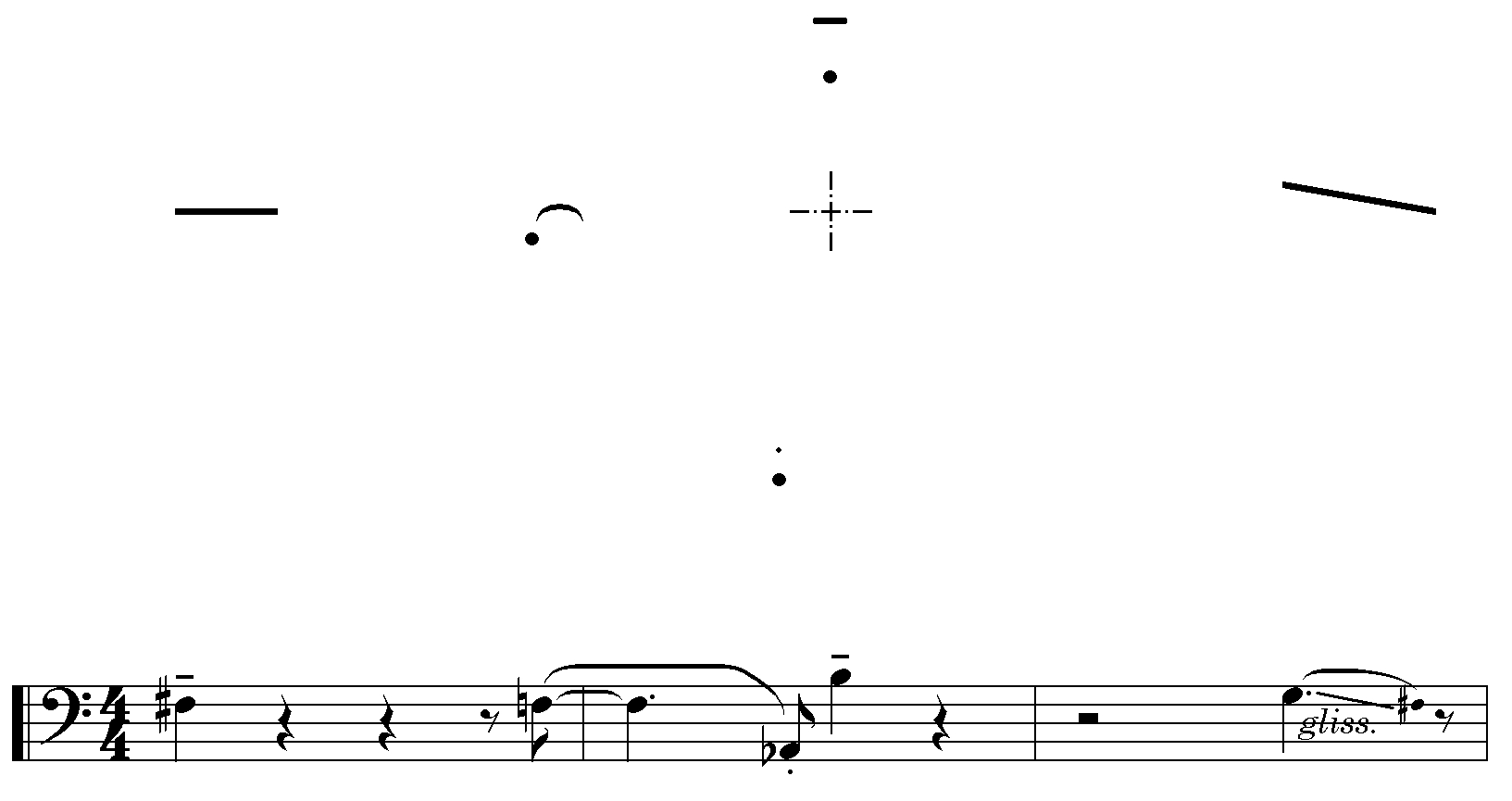→ Performances
Aposiopesis
Music for cello
ca. 7 Min.
comp. & FP 1990
→ Download pdf 376 kB
→ Video Live-Recording 2020 Frankfurt am Main,
→ Matthias Lorenz - vc.
Introduction:
Aposiopesis means “becoming silent“ or “the beginning of silence“. As a musical and rhetorical device of the compositional
techniques from the seventeenth and eigtheenth century it is used as a pause to indicate loss and death, in the antique
oratory however it is used as a pause just before the most effective argument, namely before the climax of the speech.
The piece plays exactly with this discrepancy in meaning.
The piece picks up the idea of a gregorian ‚tenor‘, that is to say of a central note without functional clearness, and
constructs itself around this. Distance and proximity, departure and return from this center and finally alteration of
the center itself determine the form of the composition. Five small and entirely different figures, which are developed
throughout the course of the play with help of variations and which sound all the different sides of the cello tones,
compose the ‚gestiarium‘ and each one of these figures has a different relationship to the ‚tenor‘.
Here I worked with the gyration in a sound space for the first time, as a possibility of varying a theme. Unlike the way
Iannis Xenakis uses this method, here it is used with regard to the fictitious and hearable. The different variations are
repeatedly overlayed and combined with one another.
This is displayed here as an example.
Five musical events are presented here in notes, as well as graphically and additionally defined by specific features:

From left to right (the cross in the middle simply defines the turning point):
1. The line corresponding the first f sharp designates a certain sound duration associated with a tone pitch definition.
If the line is horizontal there is only one tone pitch, if it runs diagonal the line results in a glissando.
2. The point with a curve defines a tone pitch - here: f – which stays the same at all times and which is held until the next event.
3. The point defined as ‚stacc-point‘ is a pitch tone – here: a flat – which is played staccato.
4. The point with the ‚tenuto-line‘ has an individual duration, which does not last until the next event and which had a determined tone pitch – here: b.
5. The declining line corresponds to the first event and results here in a downward glissando – from g to f#.
The basic design of these five events can be found in metre 4-6 within the piece.
Imagine turning the graphics around its centre and reading the pitch tone and the rhythm again. Thus the following variations are created and used in the piece:
1. A 45° clockwise rotation

2. A 315° rotation (always clockwise):

3. A 210° rotation:

4. A 280° rotation:

5. A 245° rotation:

6. A 80° rotation:

7. A 115° rotation:

8. A 150° rotation:

Most of the time these figures are combined with each other. The following can be found in the score:
Point of origin: metre 4-6
Metre 12-14: 1st rotation combined with the point of origin
Metre 20-22: 2nd rotation combined with the point of origin
Metre 29-31: 2nd and 3rd rotation combined with the first note of the point of origin
Metre 37-39: 4th and 5th rotation combined with the point of origin
Metre 40-42: 6th and 7th rotation combined with the point of origin
Metre 61-63: 7th and 8th rotation combined with the first note of the point of origin
Metre 97-99: Point of origin combined with freely arranged elements taken from the 3rd, 5th, 6th and 7th rotation
Metre 107-111: Point of origin combined with the then accomplished tenor
The method raises the question which scale should be used for measurements. Here I used quarter notes for the pitch tones.
The 1/32 note is the shortest rhythmical element. Having said that there is also the possibility of using different grid
dimensions in addition with augmentation and diminution to create shortening and distortion. With this an enormous amount
of variations can be produced, which nevertheless clearly stay connected to the point of origin.
Performances
First performance:
1990 November 20th: Hengelbräu Oldenburg;
→ Wilfried Hesse cello
Further performances:
1994 December 4th: cultural-centre Peter-Friedrich-Ludwig Oldenburg,
→ Klaus Marx cello
1995 August 16th: Erdödy-Schlößchen Wien,
→ Matthias Lorenz cello
1996 June 9th: Ledenhof Osnabrück, Matthias Lorenz cello
1996 June 14th: Kunstverein Oldenburg, repeat of June 9
1996 June 16th: Foyer of the Theater, Lingen/Ems, repeat of June 9
2020 March 5th: Projekttheater Dresden, Matthias Lorenz cello
2020 March 7th: Ausstellungshalle Frankfurt am Main, repeat of March 5th
2020 March 9th: Kunstverein Oldenburg, repeat of March 5th








